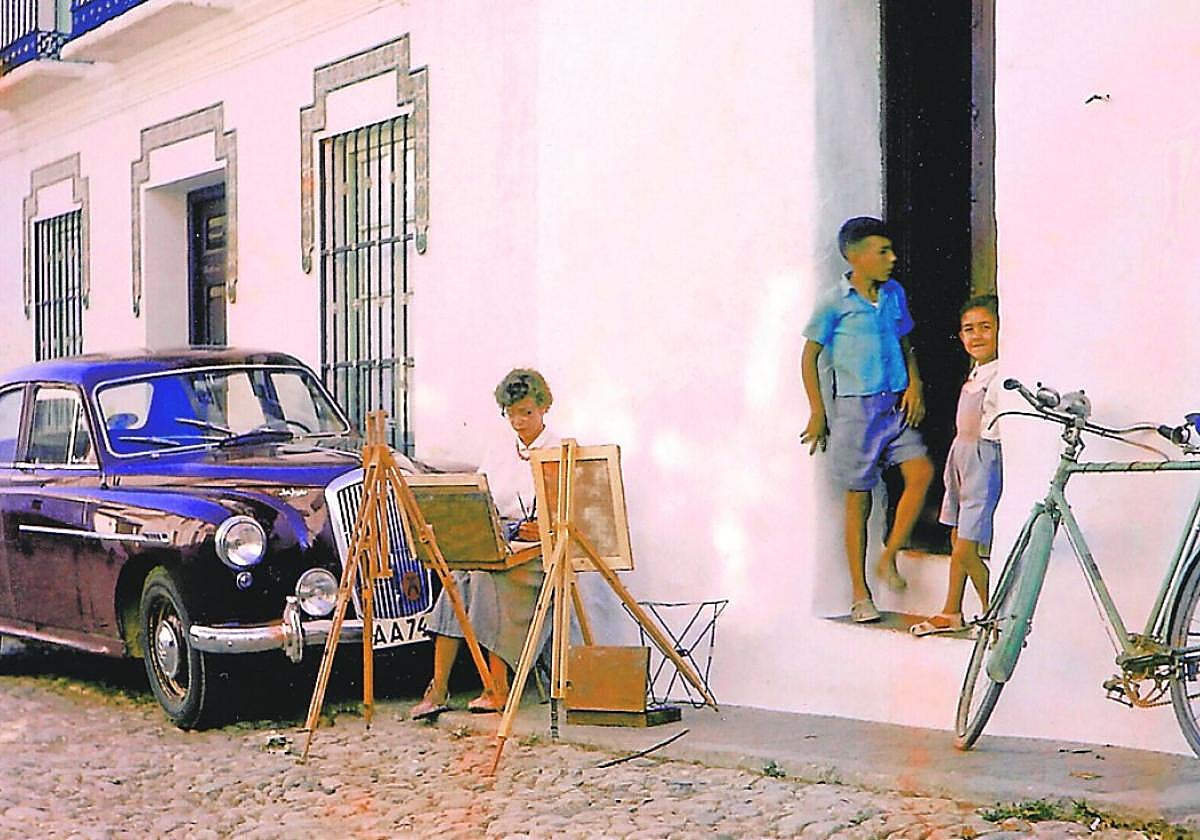The mysterious Swede who photographed Benalmádena and its people in the 1950s
Older locals still remember him. He was one of the first foreign residents in the Pueblo and before he left he donated the 41 photos now on display
Lorena Cádiz
Friday, 18 August 2023
Nobody remembers his name, nor are there any photographs of him. All we know is that he was Swedish and spent long periods of time in Benalmádena Pueblo in the 1950s. He rented a house in what today is Calle Real and with his camera he created a portrait of a village that looked very different then from what it does now, along with its people and their customs.
Those who remember him know him only as El Sueco (The Swede), one of the first foreign residents in the area. Nobody knows what he did for a living or how he got there, although there are theories: one is that he was a writer and his wife an artist, and both found inspiration in Benalmádena.
What is known is that this mysterious character has become part of local history; in 2007, by then quite elderly, he went to Benalmádena town hall to sort out some paperwork before leaving the area for good. There, it just so happened that he came across a civil servant who spoke Swedish, Juan Gómez. "He was surprised that someone spoke his language and we started a conversation," Gómez himself told SUR.
The conversation got round to a collection of photographs of the Pueblo that the Swede wanted to donate. He offered them to Juan, who accepted and kept them well preserved until recently, when he handed them over to local cultural association Ben-Al-Arte. They decided to retouch the photographs to improve their quality and put them on display. Now, many local people have found themselves in these images, or have recognised a relative or neighbour.
The collection of 41 images is currently on display in the Silvestre González senior citizens' day centre in Plaza de Andalucía in Benalmádena Pueblo, where they will remain until the end of August, open to the public every morning.
José Luis Molina, secretary of Ben-Al-Arte, and Alonso Jiménez have been responsible for retouching the photographs and collecting the stories and memories that these have revived among the locals.
Molina explained that one of the images shows the house the Swede rented with a woman, thought to be his wife, painting outside the door. A car with Swedish number plates is parked in the street .
"One of the local residents told us that at a fair there was pigeon-shooting and someone missed and hit a boy in the face. The only car in the village at the time was the Swedish couple's and they took him to the doctor's," said Molina.
How things have changed
The rest of the images show a rural Benalmádena where donkeys came and went carrying logs and water jugs, where children wandered the streets, sometimes naked, sometimes with runny noses and sometimes playing with the pigs and their babies. Back then Benalmádena Pueblo was barely urbanised, the prison was a small house in the middle of the village and the cemetery occupied a plot of land next to the church. Women went to do their laundry at washing places in El Chorrillo or La Cazalla and the children put their First Communion outfits on at Corpus Christi.
There are also local characters in the photographs, such as Pedro 'el de La Romera', who ran a bar, but was also in charge of castrating pigs, which he did, right there, in his bar doorway. He castrated them, threw their testicles into the street and cured the pigs' wounds with lemon juice.
